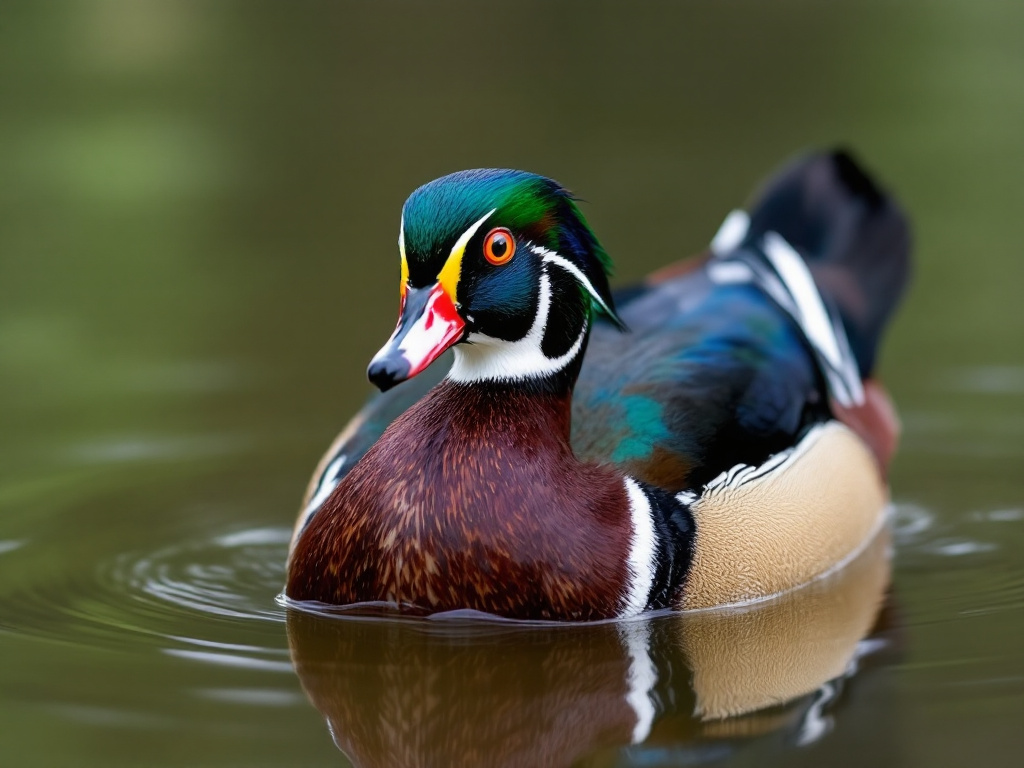Image generated by flux-ai.io & content generated by ChatGPT Version 4o-mini
Understanding the Wood Duck: A Colorful Success Story in Martin County
Residents of Martin County, Florida, might be familiar with the beautiful wood duck, a vibrant waterfowl known for its stunning colors and distinctive calls. Once on the brink of extinction due to hunting and habitat loss, the wood duck has now made a remarkable comeback, thanks to conservation efforts. This story is not only about a bird; it highlights the importance of wildlife management and can inspire local actions to protect our natural resources.
A Look at the Wood Duck
Wood ducks are easily recognizable by their striking plumage. Males display iridescent greens, blues, and purples, while females are more understated but equally charming with their soft browns and white eye rings. These ducks can be found across North America, from Canada down to Florida, making them a common sight in our local wetlands, rivers, and wooded areas.
In Martin County, which boasts numerous freshwater habitats, wood ducks thrive. They prefer environments that offer both water and wooded cover, such as swamps and forests near ponds. This ideal setting not only provides food but also shelter from predators, making it an excellent nesting ground.
The Comeback Story
At the beginning of the 20th century, the wood duck population suffered drastically due to overhunting and habitat destruction. However, following the implementation of the Federal Migratory Bird Treaty Act in 1918, hunting regulations were established, and conservation programs began to help restore their numbers. These programs include monitoring populations, creating nesting boxes, and ensuring sustainable hunting practices.
Thanks to these efforts, wood ducks are now one of the most abundant waterfowl species in North America. In fact, they are often called “summer ducks” in Florida because they breed here during the warmer months.
How You Can Help
For residents of Martin County, there are several ways to contribute to the ongoing success of the wood duck population. One effective method is to build and maintain wood duck nest boxes. These boxes provide safe nesting sites for the ducks, especially since natural tree cavities are increasingly scarce. By placing these boxes in appropriate locations—preferably near water and at least 20 feet off the ground—local residents can help support wood duck breeding.
Additionally, maintaining the health of our wetlands is crucial. This means being mindful of pollution, invasive species, and the destruction of natural habitats. Simple actions, such as participating in local clean-up efforts or supporting sustainable agricultural practices, can make a big difference.
The Impact on Our Community
The resurgence of the wood duck is not just a win for wildlife; it also has implications for our local economy and environment. A healthy population of wood ducks indicates a thriving ecosystem, which is vital for fishing, recreation, and tourism in Martin County. Birdwatchers and hunters alike contribute to our economy, and the presence of diverse wildlife adds to the charm of our natural landscapes.
Moreover, engaging in conservation activities can bring communities together. Whether through local 4-H programs or community events organized by the Martin County Extension Office, there are opportunities for residents to learn about wildlife management and get involved.
Conclusion
The wood duck’s recovery is a testament to the power of conservation and community involvement. As Martin County residents, we have the unique opportunity to support these beautiful birds and protect our local environment. By building nest boxes, preserving wetlands, and participating in community efforts, we can all play a role in ensuring the future of our feathered friends. So next time you’re near a pond or swamp, keep an eye out for wood ducks; they might just be the colorful ambassadors of our successful local conservation efforts.
References
WEC 168/UW180: The Wood Duck. (n.d.). Ask IFAS – Powered by EDIS. https://edis.ifas.ufl.edu/publication/UW180

